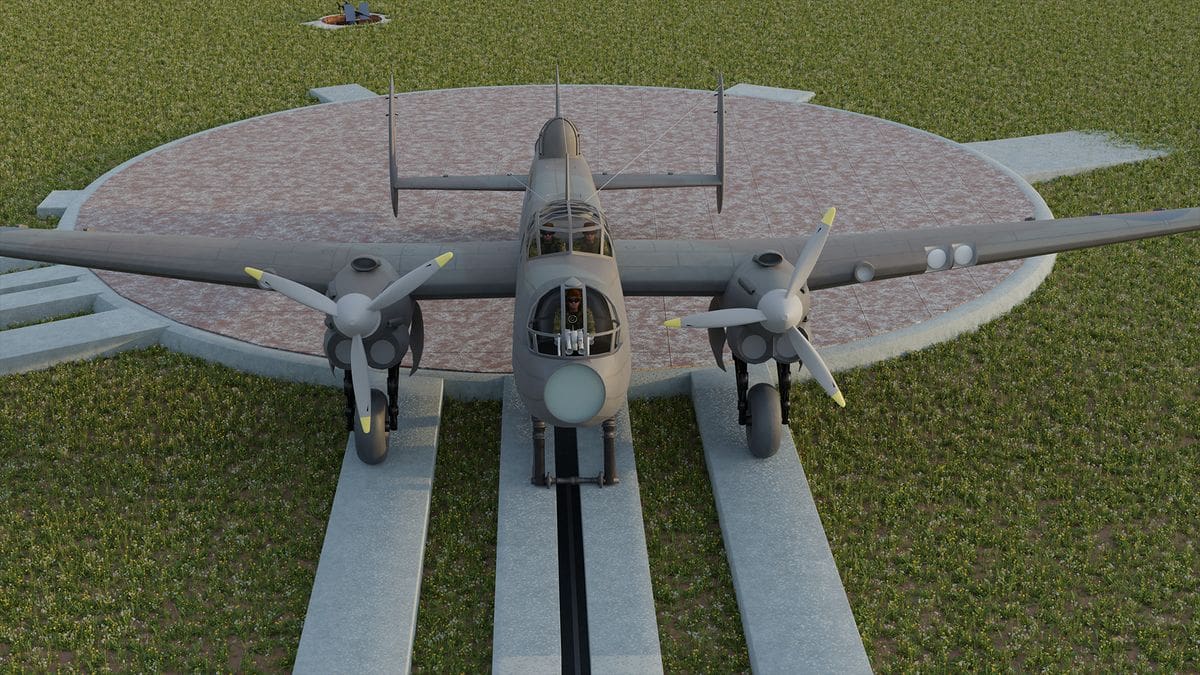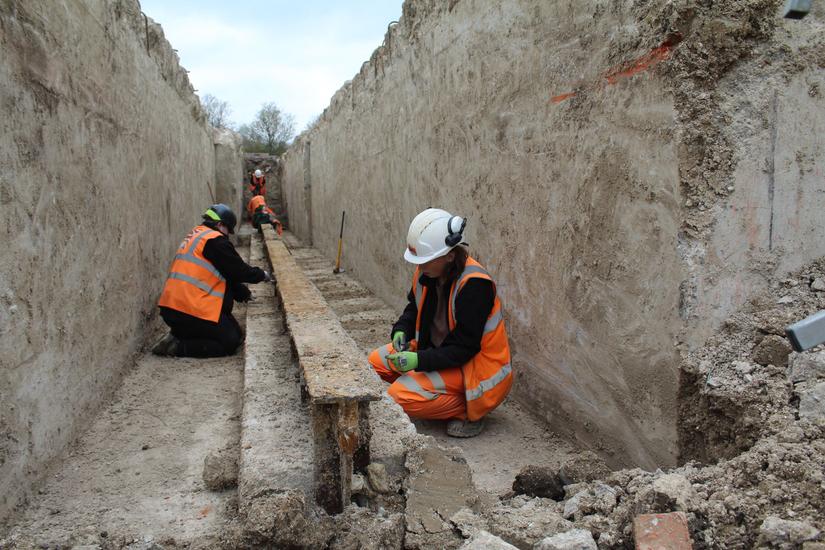The catapult was an experimental design that was supposed to launch British WWII bombers over a shorter runway. It was apparently never used and got buried — only to be rediscovered by researchers at the Museum of London Archaeology (MOLA).

Having a catapult for airplanes is not nearly as crazy as it sounds. It’s how some aircraft are still launched from warships because the runway is too short for the airplane to develop enough momentum (and the catapult compensates for that). Several different airplane catapults were trialed, particularly around World War II, but most catapults share a similar sliding track concept with the plane being catapulted on a rail.
The newly rediscovered catapult is close to Oxford, UK. It’s called the Royal Aircraft Establishment (RAE) Mark III Catapult and was engineered to save warplane fuel and make use of shorter runways
The setup featured 12 Rolls-Royce aero engines and a large rotating turntable that directed aircraft toward one of two concrete track runways that were just 82 meters long. The engines were underneath a turbine that drove a ram. High-pressured air was forced into the ram which then rapidly expanded to the length of a guided track, guiding the large planes towards the runway and helping them set to the sky.
Although this particular runway was never used, the design served as an inspiration for future similar inventions.

It may seem rudimentary, but it’s actually a strikingly modern concept. Nowadays, electromagnetic catapults are mostly used, as they accelerate aircraft more smoothly, putting less stress on their airframes. But the idea of compensating for a short runway with a catapult is an important concept for aircraft carriers — and the groundwork for this invention was laid during the war.
“This catapult was part of a series of innovations and experimentations that happened in the lead-up to and during World War Two. Unfortunately, this was one idea that literally never took off. The prototype catapult had several problems, including engines wearing out and the design not fitting the bomber planes it was meant for,” a MOLA statement explains.
The existence of the catapult was known from historical records, but this is the first time it was excavated.


Susan Porter, MOLA Project Officer, says: “This fascinating structure reminds us of the rapid experimentation and innovation of the interwar years and World War Two. Crucially, recording the location and appearance of every inch means that the catapult is preserved by record for future generations.”
The excavations also uncovered another runway as well as a previously unknown gun emplacement that defended the air base from attack.
MOLA researchers have also created a 3D digital replica of the remains that enables everyone (both the public and researchers) to explore the Mark III Catapult from the comfort of their own homes.
The catapult has now been dismantled to allow construction works to continue. Archaeologists have documented all the information and are working on a detailed record of this unusual piece of World War Two history, preserving individual parts.
The rediscovery of the RAE Mark III Catapult is a testament to the striking innovation and experimentation during the World War II era. The preservation of this catapult, both physically and digitally, ensures that this piece of history and the work behind it are not lost.









